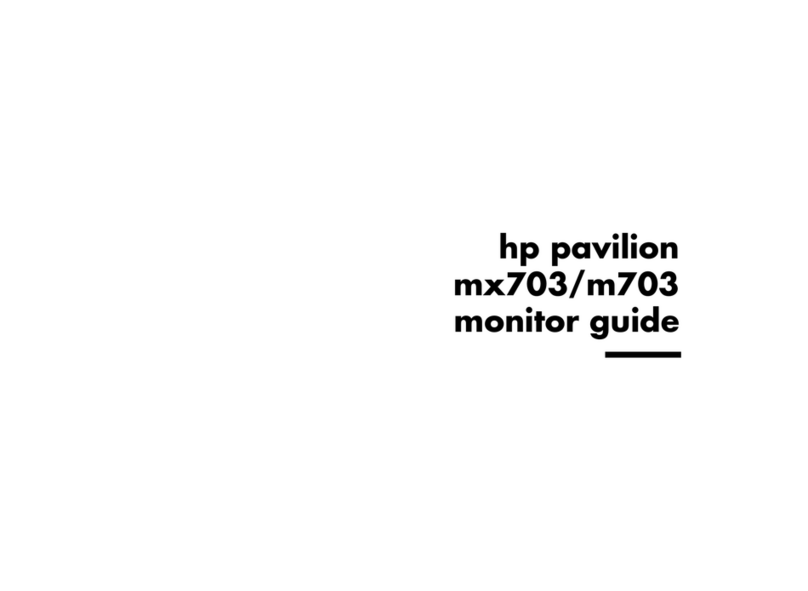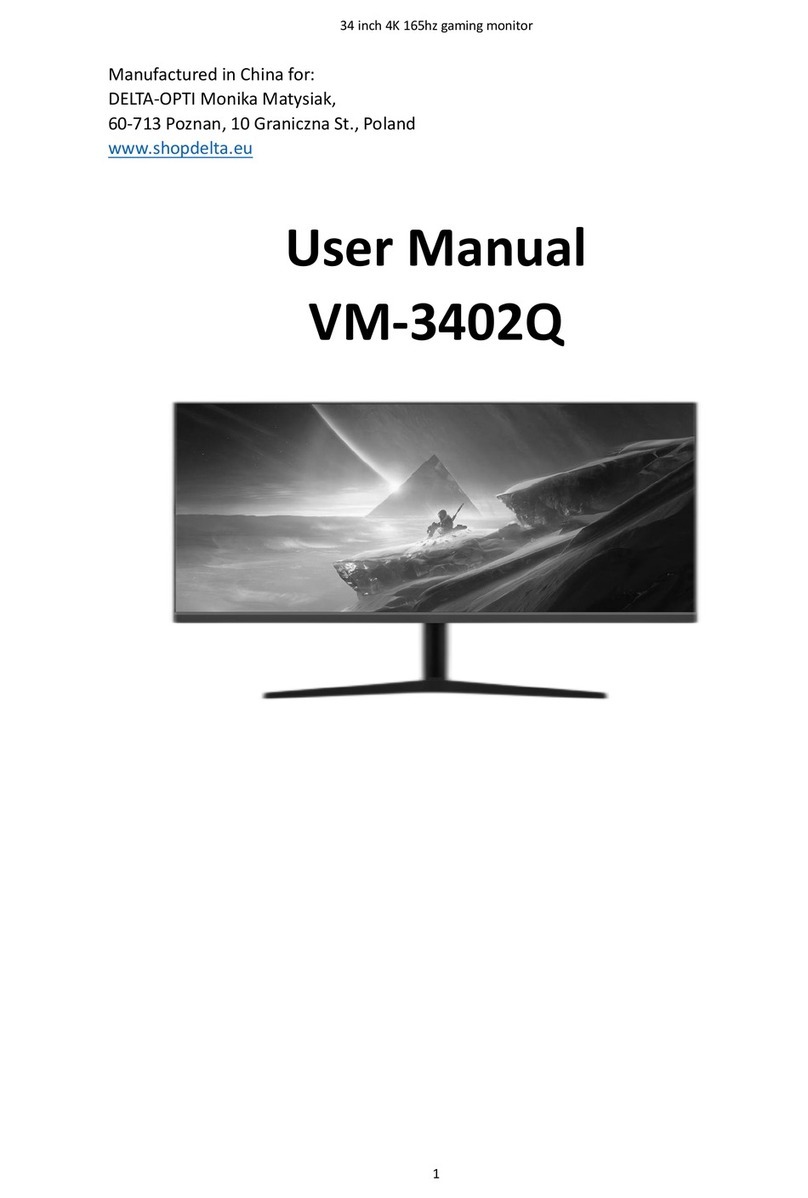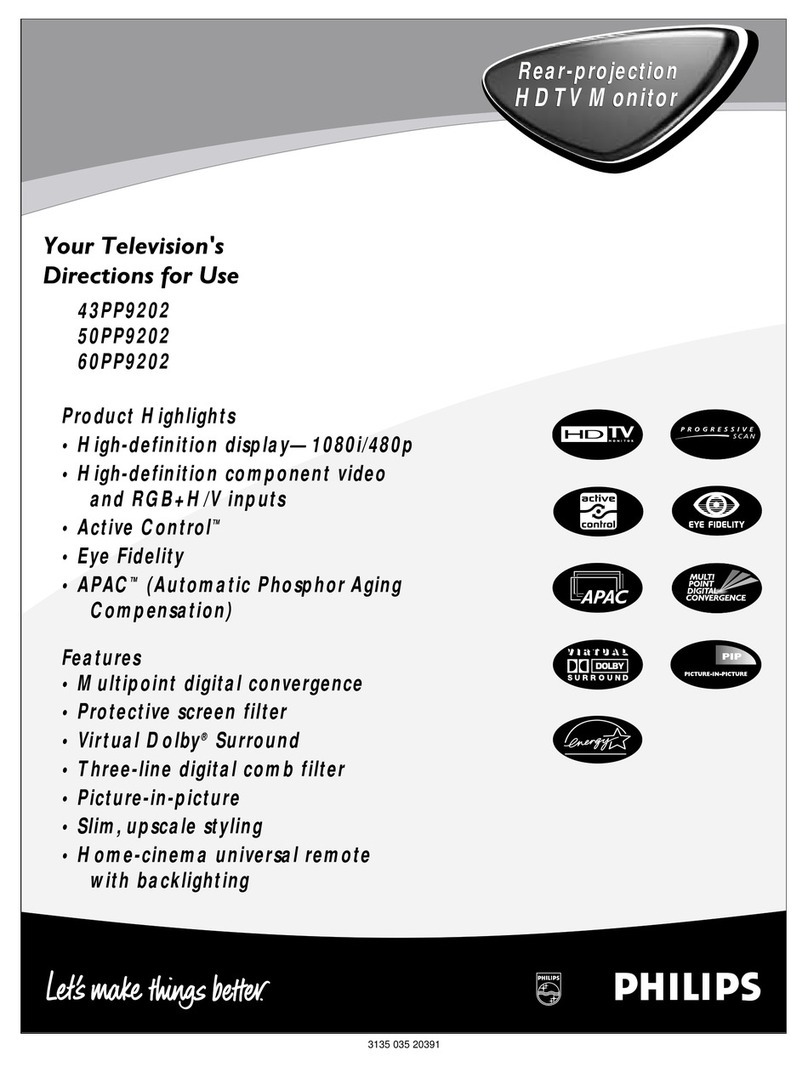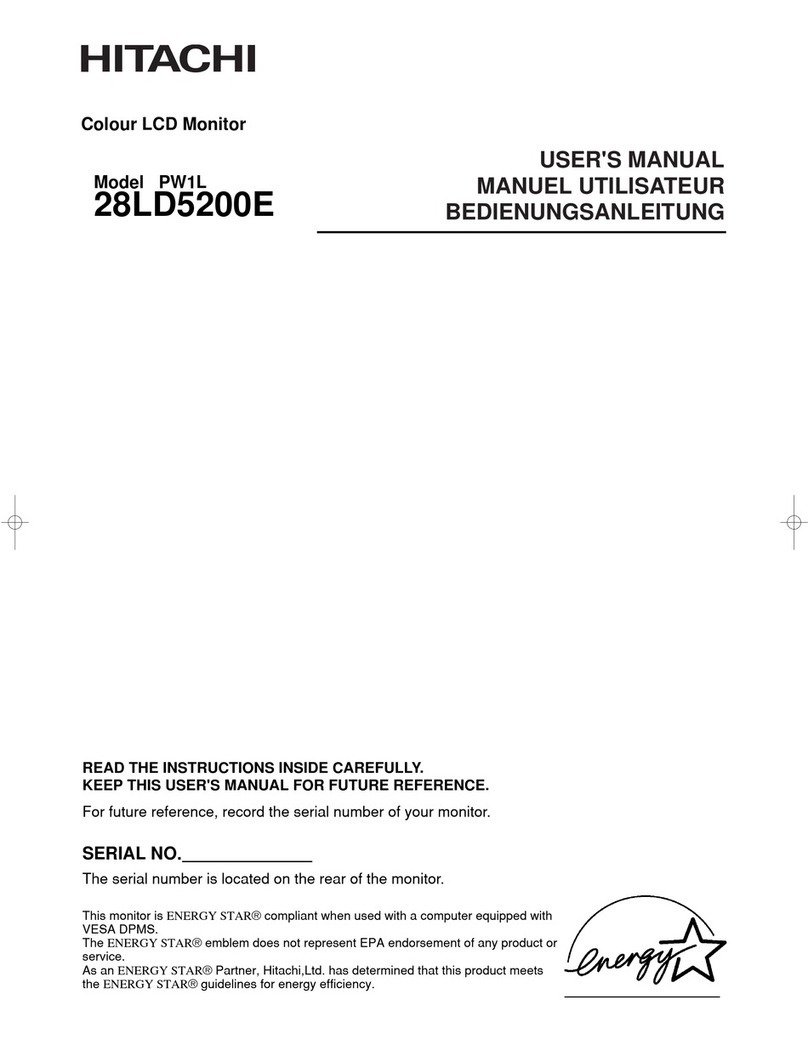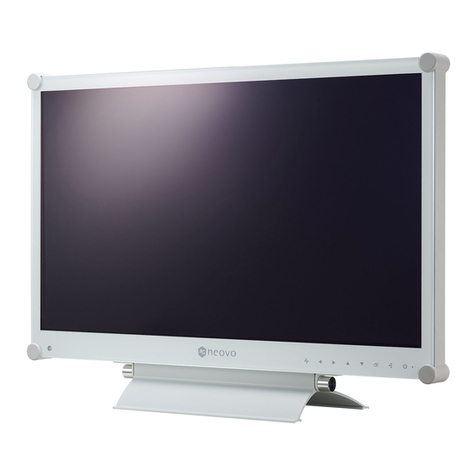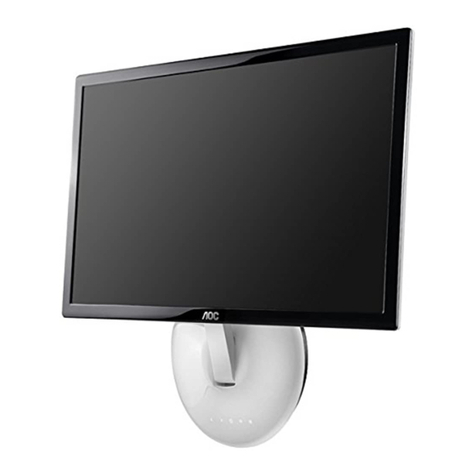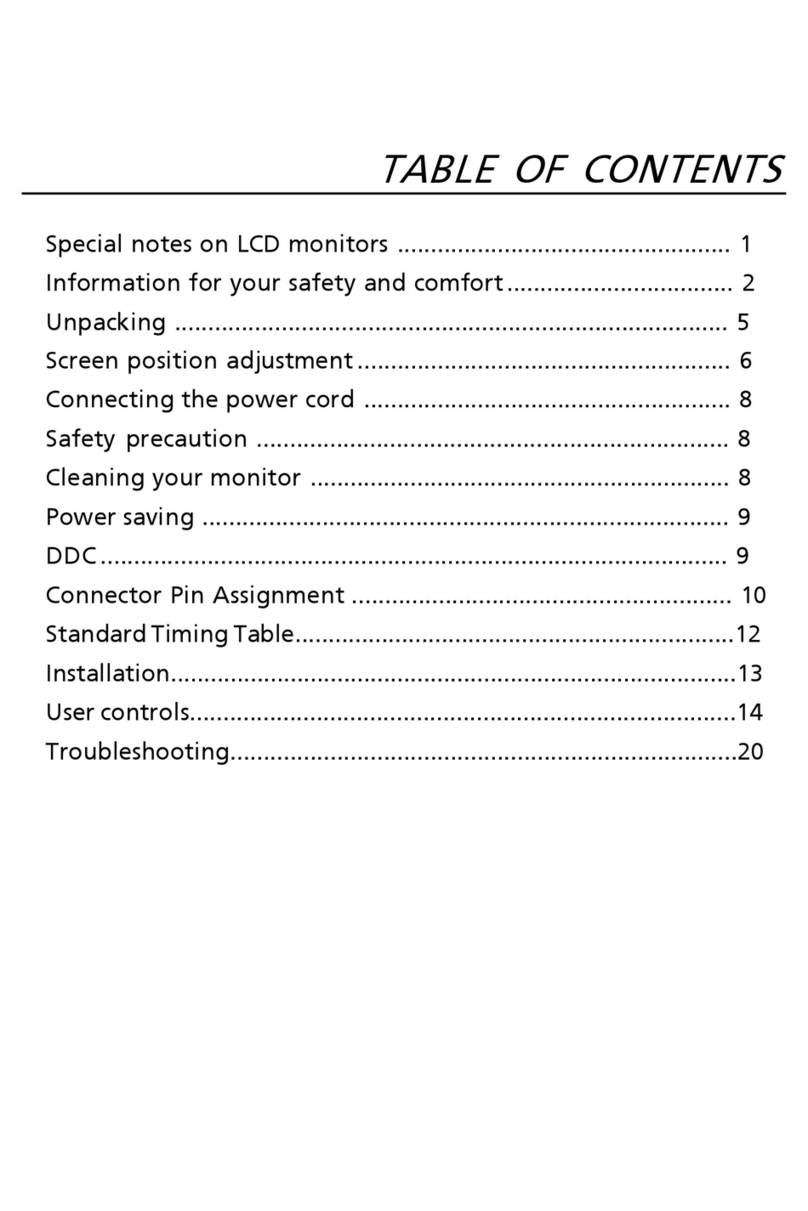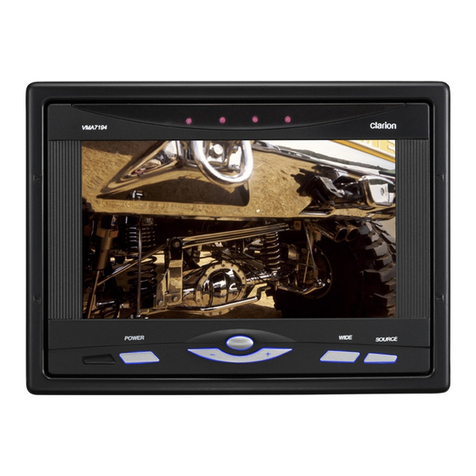CharlesWater 99093 Service manual

The Dual Operator Workstation Continuous Monitor is a
real time instrument that ensures that critical ESD control
components in a sensitive area are effectively grounded. It
independently monitors the operator and the work surface.
The instant an operators wrist strap or cord fails, the monitor
will issue audible and visual alarms alerting the user of the
problem. In the same manner, the unit also confirms that a
path to ground of less than 10 megohms (1 x 10E7 ohms)
exists from the ESD protective work surface(s).
ADVANTAGES OF CONTINUOUS MONITORING
OVER PERIODIC TESTING
Many customers are eliminating periodic touch testing of wrist
straps and are utilizing continuous monitoring to better ensure
that their products were manufactured in an ESD protected
environment. Full time continuous monitoring is superior to
periodic or pulsed testing, and can save a significant amount
of money in testing costs and rejected product. Periodic testing
detects wrist strap failures after ESD susceptible products have
been manufactured. The costs of dealing with the resulting
catastrophic failures or latent defects can be considerable.
Dual Operator Workstation Continuous Monitors eliminate the
need for users to test wrist straps and log the results; by their
function, these monitors satisfy the ISO and ANSI/ESD S20.20
test logging.
“A properly grounded wrist strap will keep a person’s body
voltage to approximately + 10 V. The main advantage to a
constant [or continuous] monitor is the immediate indication
that the employee receives if the wrist strap falls open. With
an unmonitored system, the employee will not be aware of
a wrist strap failure until the start of the next shift. This has
reliability benefits for an ESD program as it might help reduce
or eliminate ESD damage. There are also other process
benefits from using constant monitors such as the elimination
of the need to maintain daily test logs and a reduction in the
time for employees to make the daily test. For units that also
monitor the connection of a work surface to protective earth, it
is also possible to reduce or eliminate the checking of the work
surface as part of the periodic audit of the process. Constant
monitors might be implemented by an organization due to
high reliability requirements imposed by customers.” [CLC/TR
61340-5-2:2008 User guide Annex B.1.3 Constant monitors]
WAVE DISTORTION DETECTION TECHNOLOGY
PROVIDES TRUE 100% CONTINUOUS MONITORING
From the technical alternatives available, Charleswater designs
and manufactures many of its Continuous Monitor product
offerings using wave distortion technology . Wave distortion
circuitry monitors current/voltage phase shifts and provides
true 100% continuous monitoring. Electrical current will lead
voltage at various points due to the combinations of resistance
and capacitive reactance. By monitoring these “distortions”
or phase shifts, the wave distortion Workstation Continuous
Monitor will reliably determine if the circuit is complete.
PPE-5101.E June 2012 Page 1 of 4
Dual Operator Workstation Continuous Monitor with
Satellites - Operation, Installation and Maintenance
Figure 1. Charleswater Dual Operator Continuous Monitor with
Satellites
Description
Leading companies use continuous monitors as a cost
effective component in satisfying the clause 5.2.3 Compliance
Verification Plan requirements of EN61340-5-1 Edition 1.0
2007-08. The Charleswater Dual Operator Continuous Monitor
with Satellites continuously monitors the grounding integrity of
two operators, and two ESD working surfaces’ path to ground.
The monitor will provide instantaneous notification of static
control equipment failures, and eliminates the need of costly
and difficult to supervise wrist strap logging record keeping.
This unit is highly cost effective as it is designed to monitor any
conventional single-wire wrist strap and ground cord system.
Per ESD Handbook TR 20.20 paragraph 5.3.2.4.4 Test
Frequency, “Because wrist straps have a finite life, it is
important to develop a test frequency that will guarantee
integrity of the system. Typical test programs recommend
that wrist straps that are used daily should be tested daily.
However, if the products that are being produced are of such
value that knowledge of a continuous, reliable ground is
needed, then continuous monitoring should be considered or
even required.”
The Dual Operator Continuous Monitor with Satellites is
available in the following models:
TECHNICAL BULLETIN PPE-5101.E
Made in the
United States of America
© 2012 CHARLESWATER LTD.
Unit 17. Millbrook Business Park, Sybron Way • Crowborough, East Sussex TN6 3JZ United Kingdom
Phone: 00 44 (0) 1892-665313, Fax: 00 44 (0) 1892-668838 • Internet: Charleswater.co.uk
The Dual Operator Continuous Monitor with Satellites is a
single-wire impedence continuous monitor designed to monitor
body types from a 5th percentile female to a 95th percentile
male. This range covers a 5 foot tall 90 pound person to a 6
foot 5 inch 250 pound person in any production environment.*
The 99093 and 99095 is powered by a 220 VAC, 60/50 Hz,
plug-in transformer which also provides connection to ground.
No user adjustment required: The Continuous Monitor is
drift-free and designed to be insensitive to the effects of
squeezing or stretching the coil cord. It requires no user
adjustment.
Item
99093
99095
Power Adapter Input
220 VAC
220 VAC
Parking Snap Size
4mm
10mm

Wave distortion technology can be referred to as “vector
impedance monitoring”. This description is valid as the
wave distortion technology measures the impedance at the
monitored banana jack and looks for changes in either the
capacitance or resistance of the circuit which includes the wrist
strap and its wearer. It uses filtering and time domain sampling
to filter out false signals caused by voltage offsets, 60 Hz fields
and other electro-magnetic and electrostatic interference.
In normal factory environments, and with persons whose
capacitance with respect to ground is within design limits (5
feet tall 90 pound person to 6 foot 5 inch 250 pound person),
the Dual Operator Workstation Continuous Monitor cannot
be “fooled”. It will provide a reliable alarm only when the
wrist strap or work surface becomes dysfunctional or unsafe
according to accepted industry standards. The Dual Operator
Workstation Continuous Monitor is drift-free and designed to
be insensitive to the effects of squeezing or stretching the coil
cord.
ADVANTAGES OF WAVE DISTORTION AND SINGLE-WIRE
TECHNOLOGY
The Charleswater Dual Operator Workstation Continuous
Monitor allows the use of any standard, single-wire wrist strap
and coil cord. The monitor/wrist strap/cord system life-cycle
costs are by far lower than alternative systems which require
more expensive & less durable dual-wire cords and special
wrist straps. Dual-wire cords are expensive and are the weak
link of the system. They are the most likely component to
need replacement. Over a five year period this can make
a dual-wire system three times as expensive as a system
utilizing single-wire wrist straps and cords.
The dictionary defines constant as uniform and unchanging,
and continuous as uninterrupted. Although Charleswater
dual-wire resistance monitors utilize a continuous current,
some dual-wire resistance monitors utilize a pulsed test current
and do not really provide continuous monitoring. For example,
during each 2.2 second pulse cycle of a leading “constant”
resistive monitor, electrical current is pulsed for only 0.2
seconds followed by an unmonitored interval of 2 seconds.
This leaves the user/wrist strap unmonitored for over 90% of
each cycle. Damaging ESD events can easily occur in the
portion of the time in between the pulses. The off period of 2
seconds equals 2 billion nanoseconds, and “it takes only about
25 volts applied for 100 nanoseconds to blow most memories
or microprocessor.”* The dual-wire system does not meet all
industry ESD S6.1 specifications, as the cords do not meet the
EOS/ESD Association guidelines for the 5 to 25N “breakaway
force” requirement for ensuring a reliable path-to-ground and
preventing accidental disconnects.
By using the reliable wave distortion technology to determine
if the circuit is complete, there are no false alarms. There is
no need to adjust or tune the monitor to a specific user or
installation. The miniscule amount of electrical current (less
than 1 volt coil cord signal) required to generate the waveform
has never caused reported skin irritation and is extremely safe
for use in voltage sensitive applications such as disk drive
manufacturing.
Packaging
1 Dual Operator Continuous Monitor
2 Satellite Remotes
1 24VAC Power Adapter
2 Mat Monitor Cords (Black), 1.8m
2 Mat Ground Cords (Green and Yellow), 1.8m
2 Satellite Remote Cables, 2.1m
4 Push and Clinch Snaps
4 Countersink Washers
6 Screws
1 Certificate of Calibration
Installation
Remove the monitor and satellites from its packaging. Inspect
for any shipping damage. Confirm that the worksurface is
1 x 10E7 ohms or less and has a conductive layer such as
Dual Layer Rubber, Dissipative 3-Layer Vinyl, or Micastat®
Dissipative Laminate with conductive buried layers.
The control unit for Dual Operator Continuous Monitor is
normally installed under the bench top toward the front edge
of a workstation where the LEDs are easily visible. Use the
enclosure’s flanges to mount the monitor.
PPE-5101.E Page 2 of 5
*1981 article by Donald E. Frank - Electrical Overstress Electronic
Discharge Symposium Proceedings
© 2012 CHARLESWATER LTD.
Screws
Unit 17. Millbrook Business Park, Sybron Way • Crowborough, East Sussex TN6 3JZ United Kingdom
Phone: 00 44 (0) 1892-665313, Fax: 00 44 (0) 1892-668838 • Internet: Charleswater.co.uk
Figure 2. Mounting the monitor
Figure 3. Typical setup of the Dual Operator Continuous
Monitor and Satellites

SATELLITE REMOTES
The Satellite Remotes
can be installed up to
2.1 meters away from
the monitor control unit.
Two operators plus two
worksurfaces can be
monitored at separate adjacent workstation workstations. The
worksurface mat circuit may be bypassed by a switch located
at the rear of the satellite.
Also shown on each satellite remote is an unmonitored ground
connection jack where a supervisor, guest, or equipment can
be grounded.
The following procedure will outline how to correctly install the
Dual Operator Continuous Monitor and its satellites to properly
monitor an ESD protected workstation.
Figure 4. Wiring the Dual Operator Continuous Monitor
and Satellites
1. Connect the Satellite Remotes to the Control Unit using the
included cables (see Figure 4).
2. Mat monitoring may be bypassed by using the switch
located inside the hole located at the rear of the satellite
remote.
3. Install Screws and Washers or Push and Clinch snaps 30 to
183 cm apart from each other on the worksurface mat.
Make sure that they pierce and clinch the bottom side of the
mat.
4. Ground the worksurfaces by using the included mat ground
cords. Snap one end to the push and clinch snap and
connect the other end to common point ground.
5. Connect the mat ground cord to the remaining push and
clinch snap. Connect the other end of the cord to the back
of the satellite remote (see Figures 4 and 5).
6. A convenient 3-wire 220 VAC outlet should be located and
tested for proper wiring and grounding. We recommend an
AC Outlet Analyzer to verify proper wiring.
7. Plug the power adapter into the outlet and connect the plug
into the rear of the control unit. The green worksurface
LEDs should illuminate. If the red worksurface LED(s)
illuminates and alarms, inspect the snap fastener and
ground cords for proper connection. The operator LEDs will
illuminate red when an operator is not connected. The Dual
Operator Continuous Monitor is now ready for use.
Installation on Micastat®Laminate
Materials Needed:
2 Flush Mount Ground Laminate Inserts
1 Installation Tool for Flush Mount Insert
1. Install the Flush Mount Inserts first. It is recommended to
install one in the right back corner and the other in the left
back corner of the Micastat®laminated bench top.
2. Once both inserts are installed, cut the ground cord
supplied with the monitor into two pieces; make sure that
the tinned end is long enough to connect from the
worksurface terminal on the Satellite Remote to one of the
flush mount terminals located under the bench.
3. The remaining wire can then be used to connect the other
flush mount terminal to ground using the supplied ring
terminal. The shrouded molded end can then be cut off.
When complete, one flush mount terminal will connect the
Micastat®laminate to ground while the other will connect it to a
satellite remote. The satellite remote then monitors the ground
connection between the two inserts, and since Micastat®is the
only ESD laminate made with a physical uniform ground layer,
it will monitor the entire Micastat®surface ground. The wires
will stay under the bench, maximizing the usable space on the
bench top.
PPE-5101.E Page 3 of 5 © 2012 CHARLESWATER LTD.
TO
POWER
ADAPTER
WORKSTATION #2 WORKSTATION #1
TO SATELLITE
Unit 17. Millbrook Business Park, Sybron Way • Crowborough, East Sussex TN6 3JZ United Kingdom
Phone: 00 44 (0) 1892-665313, Fax: 00 44 (0) 1892-668838 • Internet: Charleswater.co.uk
Figure 5. Installing the Mat and Monitor Ground Cords to the
worksurface

PPE-5101.E Page 4 of 5
Operation
When the satellite remote unit is installed and connected
to a grounded ESD protective worksurface, the monitor’s
green worksurfaces LED’s and red operator LED’s should be
illuminated. The monitor takes 6 seconds to activate its alarm
circuitry when it is first plugged in.
To use the monitor:
1. Plug a wrist strap cord, into the jack labeled OPERATOR on
the satellite remotes. This automatically activates the
selected operator channel. The red operator LED should
illuminate and the buzzer should sound.
2. Remove the charges from your body by making contact with
a properly grounded ESD worksurface. Snap the cord to the
wristband, which should fit snugly on your wrist. This should
silence the alarm and cause the LEDs to switch from red to
green. If this does not happen, check the coil cord for
continuity or damage. Examine your wristband and ensure
that it has a secure fit. If you have dry skin, use ESD hand
lotion such as Menda Item 35666 Reztore™ ESD Hand
Lotion.
When leaving the area, the operator may take the coil cord
along or unsnap the cord from wristband and attach it to
the parking snap located on the satellite remote. This will
de-activate the alarm and allow the operator to leave the
workstation. If the cord is plugged into the OPERATOR jack,
the monitor will alarm continuously until the cord is either
parked or unplugged.
WORK SURFACE CHANNEL
The Dual Operator Continuous Monitor’s worksurface
monitoring circuitry is sufficiently sensitive to detect extremely
low current, allowing it to be used with mats having a
resistance of up to 1x 10E7 ohms (10 megohms). If the user
desires not to monitor the worksurface, the circuit can be
bypassed with the switch located at the rear of the satellite.
When the monitor is connected to a static dissipative
worksurface, the amount of current that flows is a function of
the total resistance between the monitor and the worksurface
to ground. When the resistance of the worksurface is below a
present threshold, the monitor will indicate good. Conversely,
if the resistance level is high when compared to the monitor’s
reference, the unit will alarm. This is an integrating resistance
measuring circuit. Therefore, it is relatively insensitive to
externally induced electromagnetic fields. The resistance
threshold is factory set to 10 megohms (1 x 10E7 ohms).
Custom worksurface range is available upon request. Contact
customer service for more details.
Note: Per ESD S6.1, Grounding paragraph 4.1.1 “Every
element to be grounded at an ESD protected station shall
be connected to the same common point ground.” The
ESD control plan should include a tailoring** statement
that continuous monitors are used and that consistent with
manufacturer’s design grounding is via AC adapter cord to
equipment ground.
Specifications
Test range of monitored circuit 500K - 10M ohms†
Supervisor Jack
Resistance to Ground 47k ohms typical
Work Surface Limit* Set to 10 Megohms
(1 x 10E7 ohms)
Operating Voltage 220 VAC, 50-60 Hz
Wrist strap open circuit voltage 1.2 volts peak to peak @
1-2 MicroAmps
Mat test open circuit voltage 5 to 7.5 volts
Response time to alarm < 50 mS
Operating Temperature 0 - 40°C
Long Term Drift <0.5% per Decade
(1st Decade is 1 hr)
Note: Work surface must have a conductive layer such as
Dual Layer Rubber or Dissipative 3-Layer Vinyl or Micastat®
Dissipative Laminate with conductive buried layers.
Charleswater Continuous Monitors are not recommended for
use with homogeneous matting.
Maintenance and Calibration
The Dual Operator Workstation Continuous Monitor is solid
state and designed to be maintenance free. The 99093 is
calibrated to NIST traceable standards. There are no user
adjustments that can be made. Because of the impedance
sensing nature of the test circuit, special equipment is
required for calibration. We recommend using the EMIT 50512
Continuous Monitor Calibration Unit whenever calibration
is performed annually or any of the satellite remotes are
replaced. The Calibration Unit is a most important product
which allows the customer to perform NIST traceable
calibration on continuous monitors and can be used to perform
compliance verification required by EN61340-5-1. The
EMIT 50512 is designed to be used on the shop floor at the
workstation, virtually eliminating downtime, verifying that the
continuous monitor is operating within tolerances.
† This cannot be verified with standard DC test equipment. The
continuous monitor is an impedance sensing device and the limits
are determined by the magnitude and angle of the impedance.
*Contact factory for special limits.
© 2012 CHARLESWATER LTD.
Unit 17. Millbrook Business Park, Sybron Way • Crowborough, East Sussex TN6 3JZ United Kingdom
Phone: 00 44 (0) 1892-665313, Fax: 00 44 (0) 1892-668838 • Internet: Charleswater.co.uk

Unit 17. Millbrook Business Park, Sybron Way • Crowborough, East Sussex TN6 3JZ United Kingdom
Phone: 00 44 (0) 1892-665313, Fax: 00 44 (0) 1892-668838 • Internet: Charleswater.co.uk
Limited Warranty
Charleswater expressly warrants that for a period of one (1) year from the date of purchase, Charleswater Ionisation Test Kits will be free
of defects in material (parts). Within the warranty period, the material will be tested, repaired or replaced at Charleswater’s option, free of
charge. Call Customer Service at 00 44 (0) 1892-665313 for a Return Material Authorisation (RMA) and for proper shipping instructions
and address. You should include a copy of your original packing slip, invoice, or other proof of purchase date. Any unit under warranty
should be shipped prepaid to the Charleswater factory. Warranty replacements will take approximately two weeks.
Warranty Exclusions
THE FOREGOING EXPRESS WARRANTY IS MADE IN LIEU OF ALL OTHER PRODUCT WARRANTIES, EXPRESSED
AND IMPLIED, INCLUDING MERCHANTABILITY AND FITNESS FOR A PARTICULAR PURPOSE WHICH ARE
SPECIFICALLY DISCLAIMED. The express warranty will not apply to defects or damage due to accidents, neglect, misuse,
alterations, operator error, or failure to properly maintain, clean or repair products.
Limit of Liability
In no event will Charleswater or any seller be responsible or liable for any inury, loss or damage, direct or consequential,
arising out of the use of or the inability to use the product. Before using, users shall determine the suitability of the product for
their intended use, and users assume all risk and liability whatsoever in connection therewith.
PPE-5101.E Page 5 of 5 © 2012 CHARLESWATER LTD.
Unit 17. Millbrook Business Park, Sybron Way • Crowborough, East Sussex TN6 3JZ United Kingdom
Phone: 00 44 (0) 1892-665313, Fax: 00 44 (0) 1892-668838 • Internet: Charleswater.co.uk
This manual suits for next models
1
Table of contents
